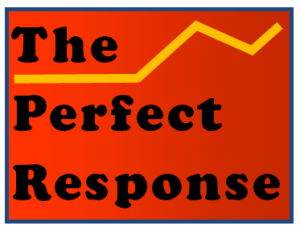Building on the premise that a name must come prior to the perception, our rapid growth of awareness in mental crises is abetted by an expanding lexicon of depression terms.
[With theories of communication, the most interesting ideas are also the most difficult to pin down. So it is with the idea of linguistic determinism: the observation that the power to name is the power to see.” Note the reversal of conventional wisdom in the wording. Give this some thought and it turns into a kind of IMAX of communication models. It is a monumental observation and a good reason to take a second look, with a few more caveats now in place. This short piece suggests that we may be victims of our own proliferating mental health language: a justifiable lede that is buried in the very last sentence.]
It’s an old truism in the language arts that we see what we can name. It’s the idea behind the phrase “linguistic determinism.” If so, our national concern about the spreading darkness of suicide and depression in the young is fed by increased usage of these terms, which have become top of mind. Two generations ago, these mental health labels were scarce in our discourse, even though these problems clearly existed. As a child I remember a family we knew well with a son who died while on an academic exchange. There was really no evidence of foul play, but that was the narrative that was accepted. At a certain point most of us will be made aware of concerns about the distress and safety of a young relative or family friend.

Having a term for a condition primes us to notice it. Mental health researchers tell us that rates of clinical depression in the United States have been steadily increasing. One estimate from the Centers for Disease Control is that about one in five Americans carry that condition, with 2.5 percent suffering from persistent depression. Similarly, the still relatively new diagnosis of Attention-deficit/hyperactivity Disorder (ADHD) rate grew from five and a half percent in 1997 to nearly ten percent by early 2021.
What’s going on?
Anyone asking the question must be humble when proposing causes. Among other factors, our reporting is probably better than it has ever been. Suicide used to be concealed behind other less stigmatizing causes, such as auto accidents. But the problems of depression and suicide are now a cause for significant national soul-searching. To be sure, taking one’s own life is a rare consequence of depression. But it is the third most common cause of death in people aged 15 to 25, assuming we can sort out true accidents from intentional acts.
Every case is different. But it is probably fair to assume that teens lack the ballast of experience to ride out rough patches, which may include broken relationships, family tensions, and low self-esteem brought on by corrosive comparisons of oneself with others built into a lot of social media.
It also seems as if there has been a sea change in the amount of public mental health talk that is now part of the lives of younger Americans and their families. Institutional mental health services have come out from under a cloud of concealment that was common in mid-twentieth century America. Counseling services have proliferated in schools and universities. And discussions of depression and anxiety are now baked into the formal orientations new college students are likely to hear when they show up on campus. Meanwhile, our media culture is bolder in dwelling on depression episodes, abetted by direct-to-consumer ads for psychoactive drugs that go not just to patients, but sometimes to their friends. Consider as well that just a few years ago no mainstream provider of television content would have touched a series like 13 Reasons Why (2017), Netflix’s fictional account a of a teen’s descent into suicide, or Hulu’s The Girl From Plainville (2022). In myriad ways, our culture has normalized the sources of teen angst that can occasionally turn self-destructive.

It also seems evident that students living on a campus are rarely ‘on their own’ and out of contact in the ways their parents once were. For some, frequent text or phone contact with home keeps family problems in play at a time when, for prior generations, being away at school offered a kind of refuge. But I digress.
Add in linguistic determinism, and you have a perfect storm. Building on this view that a name must come prior to the perception, our rapid growth of awareness in mental crises is abetted by an expanding lexicon of depression terms. And here is the key point: with its emergence out from under its former stigma, perhaps we have inadvertently over-represented mental health issues. This kind of ‘clinicalization’ of our mental lives has now gone on for years, with frequent talk about others in terms of what were once more formal diagnostic categories. We now talk casually about someone’s “anxiety,” “attention deficits” or “paranoia,” mixing subjective judgments with classification categories once limited to the bible of mental illness diagnoses, the Diagnostic and Statistical Manual of Mental Disorders known as the “DSM.”
Merging these labels into our everyday rhetoric has done its part in putting what were formally considered passing states of mind front and center. Sometimes that can be good. But it also follows that such language gets formalized through diagnosis and treatment. Once a person self-identifies as a victim of a labeled condition, that awareness can hopefully lay the groundwork for recovery. But these terms can also become self-protective justifications that delay it.
![]()



 And no generational divide seems sharper than that which separates “digital immigrants” from “digital natives.” My students are the latter. The presence of the internet for most of their lives has turned their knowledge base into levels of awareness that can be impressively wide but also quite shallow. Most seem to have opted out of keeping up with the nation’s civil life. Too few seek out real journalism or know what it is. To be sure, they scan a lot of headlines. But fewer read for news they need to know. Fewer also read the required readings in their courses, or the prodigious output of America’s best writers. These days, library books tend to remain on the shelves. A celebrity followed on Instagram will likely draw a crowd on campus. But it can be hard to fill seats for a speech by a seminal author or thinker. These patterns are reminders that the long-form media that beckoned in the analogue era of mid-twentieth century America has fewer contemporary counterparts. Once in dorm rooms, books and record albums were piled high on wood shelves separated by concrete blocks. Texts from previous courses were sometimes saved and re-read. I recall choosing my major and maybe my life track because of one assigned book brimming with interesting ideas: Murray Edelman’s The Symbolic Uses of Politics (1864).
And no generational divide seems sharper than that which separates “digital immigrants” from “digital natives.” My students are the latter. The presence of the internet for most of their lives has turned their knowledge base into levels of awareness that can be impressively wide but also quite shallow. Most seem to have opted out of keeping up with the nation’s civil life. Too few seek out real journalism or know what it is. To be sure, they scan a lot of headlines. But fewer read for news they need to know. Fewer also read the required readings in their courses, or the prodigious output of America’s best writers. These days, library books tend to remain on the shelves. A celebrity followed on Instagram will likely draw a crowd on campus. But it can be hard to fill seats for a speech by a seminal author or thinker. These patterns are reminders that the long-form media that beckoned in the analogue era of mid-twentieth century America has fewer contemporary counterparts. Once in dorm rooms, books and record albums were piled high on wood shelves separated by concrete blocks. Texts from previous courses were sometimes saved and re-read. I recall choosing my major and maybe my life track because of one assigned book brimming with interesting ideas: Murray Edelman’s The Symbolic Uses of Politics (1864). America was still two years away from the national meltdowns of 1968 when Kennedy and King were assassinated and our cities were in flames. But a burgeoning anti-war movement easily coaxed apolitical sons of the suburbs like me into contempt for the Johnson administration and the escalating Vietnam War. The iconoclastic warnings of Stokely Carmichael, Jane Fonda and Jill St. John got our attention.
America was still two years away from the national meltdowns of 1968 when Kennedy and King were assassinated and our cities were in flames. But a burgeoning anti-war movement easily coaxed apolitical sons of the suburbs like me into contempt for the Johnson administration and the escalating Vietnam War. The iconoclastic warnings of Stokely Carmichael, Jane Fonda and Jill St. John got our attention.